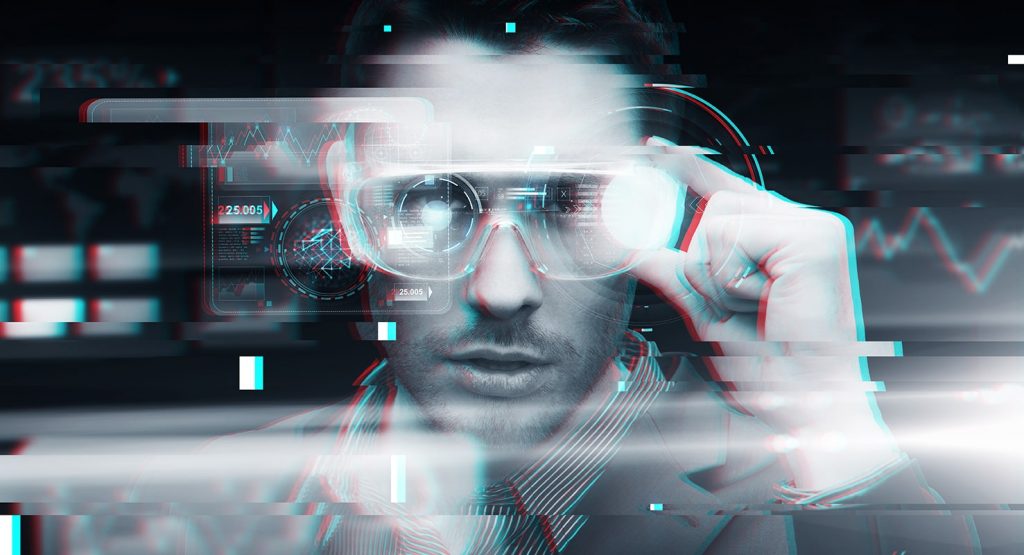The history of lawful intelligence runs a parallel course to the evolution of communications technology, from wiretaps placed on mechanical switches in the last century to today’s virtualized, server-based applications. The past two decades have seen greatly expanded complexity for both communication service providers (CSPs) and law enforcement agencies (LEAs). Challenges met by the lawful intercept industry have included infrastructure changes that shift traffic to the network edge and the cloud, additional information types such as real-time location data for subjects of interest, data cloaked by pervasive encryption, and many others. The profusion of new sources and types of information also continues to accelerate.
As augmented reality (AR) and virtual reality (VR)—together referred to as “extended reality” (XR)—move from development labs and early adopters to the mainstream, they will become increasingly important data sources for lawful intelligence. The 2020s are forecast as the decade when XR becomes ubiquitous. P&S Intelligence predicts that the market for these technologies will grow at a CAGR of over 48%, with the market size reaching over $1T by 2030.1 That report also projects that multi-user models based on smartphones and other mobile devices will show the fastest growth, with 5G playing a major role by providing consumers with high-bandwidth and low-latency connectivity.
New Venues for Criminal Behavior
While nearly every criminal act in the physical world has an analog in XR, laws are not yet well-defined about crimes committed within XR environments. Information-oriented crimes such as fraud and libel may be relatively unchanged in XR from their traditional definitions. Other relationships may be more complex. Is it illegal for one avatar to punch another in the nose? What if it’s accompanied by a threat or a demand? What if a human can feel the physical pain?
- Personal crimes can be committed among avatars similarly to among people, including verbal, physical, and even sexual assault. Perpetrators can use visceral XR experiences to intimidate, coerce, or blackmail others, and the criminal potential for causing emotional pain and distress is nearly unlimited.
- Property crimes could most straightforwardly include fraud, forgery, or theft in an XR environment. Bad actors might illegally misappropriate trademarks or other intellectual property, and even launder funds by converting government-issued money to and from an XR world’s own currency.
- Political crimes potentially range from interfering with an election to recruiting for a terrorist organization. Radical groups can engage in immersive disinformation or even use XR simulations to radicalize citizens, train them in weapons and tactics, and provide a practice environment to prepare for an attack.
Because XR explicitly seeks to emulate every detail of the physical world, it is reasonable to expect that fidelity between the two will continue to improve. This development of the technology to create more realistic experiences, which will also enable greater potential for criminal misuse. As XR-based crime emerges, legal systems across the world struggle to keep up, which creates a shifting and complex environment for lawful intercept and intelligence.
XR Data as Evidence
When a crime is committed within an XR world, it is perpetrated using data, creating the potential for a digital record that can be re-experienced by others during an investigation or trial. It’s not difficult to imagine a jury experiencing a crime or disputed events from a first-person perspective based on the XR record, similar to the ways that smartphone video is commonly used. Intercepted XR data may provide other evidentiary functions as well, such as through interactions that make reference to criminal acts or help establish conspiratorial intent, similar to the legal use of other communications content. In either case, XR is just one component of a larger body of data about subjects and events of interest. Relevant information ranges from chat transcripts that accompany the XR stream to metadata such as device and user identity, network details, time, and place.
For example, a subject of interest may be identified by factors such as username, device MAC address, and IP address. Those keys can be used to analyze a communication stream and document an individual breaching a private XR session at a given date and time, how they interacted with the environment and other users. As well as other potential factors such as patterns of behavior or relevant connections to outside events or organizations. Therefore, even when the XR content itself is inaccessible because of encryption or other factors, it can provide critical context for enforcement and investigation.
Lawful Intelligence Challenges
New usage models for the interception and analysis of XR data require new capabilities to be built into lawful intelligence solutions, building on the industry’s familiar pattern of adaptation and development. Many of the corresponding challenges overlap with other usages and content types.
- Targeting and investigation within the body of potential XR evidence, including robust capabilities to scan and query against large bodies of data where the main content may be encrypted.
- Reaching into third-party environments, including provider networks and cloud platforms, which requires a substantial time horizon to develop and adopt the needed service interfaces.
- Making XR data usable by LEAs and others, including transporting and delivering it in a form that is easy to consume and capable of being integrated with other data types, such as voice, video, and text.
As an industry leader in lawful intelligence, SS8 brings forward key intercept technologies for XR capabilities on top of two decades’ experience developing solutions to access, capture, and analyze communications traffic. Working with the operators that run XR platforms, SS8 can integrate AR and VR into the larger body of data that law enforcement has at its disposal to investigate and solve crimes as the use of technology is used in criminal activities.
Conclusion
With the rapid evolution of communications technology, SS8 is committed to continually advancing the state of lawful intelligence, in the face of new infrastructures, media, and usage models. As uptake of XR accelerates, it will become progressively more critical to law enforcement, and SS8 is developing the technologies and best practices now that will enable both CSPs and LEAs to optimally handle emerging challenges.
1 Prescient & Strategic Intelligence, August 2020. “Extended Reality (XR) Market Research Report: By Component (Hardware, Software, Services), Device Type (Mobile, Personal Computer, Headset), User (Single-User, Multi-User), Delivery Model (Consumer Engagement, Business Engagement), Application (Virtual Reality, Augmented Reality, Mixed Reality), Industry (Retail, Education, Industrial & Manufacturing, Healthcare, Media & Entertainment, Gaming, Aerospace & Defense) – Global Industry Analysis and Growth Forecast to 2030.” https://www.psmarketresearch.com/market-analysis/extended-reality-xr-market-insights?utm_source=PRN&utm_medium=referral&utm_campaign=PRN_PAID.
About Dr. Keith Bhatia

As CEO of SS8, Keith combines his broad technical and market knowledge to advance the future of lawful intelligence. In his tenure, he has positioned SS8 as a leader in a world connected by 5G and shaped by increasing digitalization and automation. Keith is impassioned to show how technology can have a positive impact on our world.
About Mr. Syed Hussain

Mr. Hussain has spent 20 years working in the telecommunication industry and brings significant technical expertise to his role as Head of Product Management for Lawful Interception products for SS8. Mr. Hussain represents SS8 in both ETSI and 3GPP standards bodies and at technology summits.
About SS8
SS8 provides Lawful Intelligence platforms. They work closely with leading intelligence agencies, communication providers, law enforcement agencies and standards bodies. Their technology incorporates the methodologies discussed in this blog and the Xcipio® and Intellego® product portfolios are used worldwide for the capture, analysis and delivery of data for the purposes of criminal investigations.



